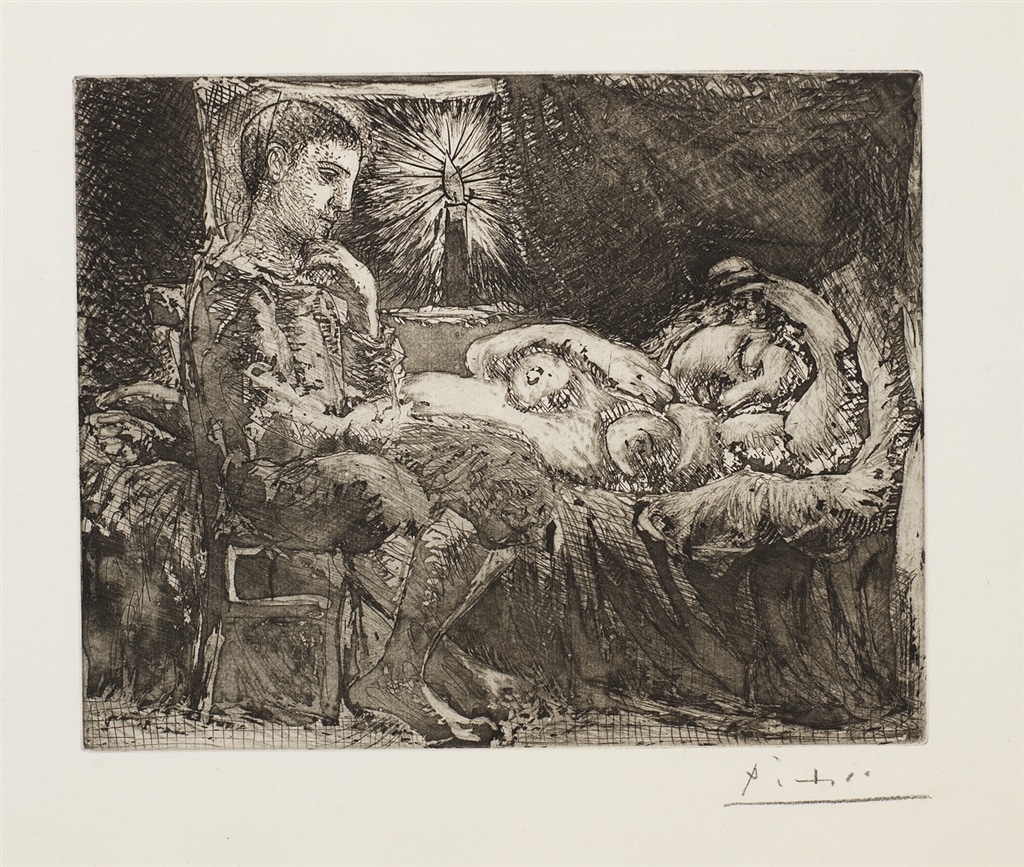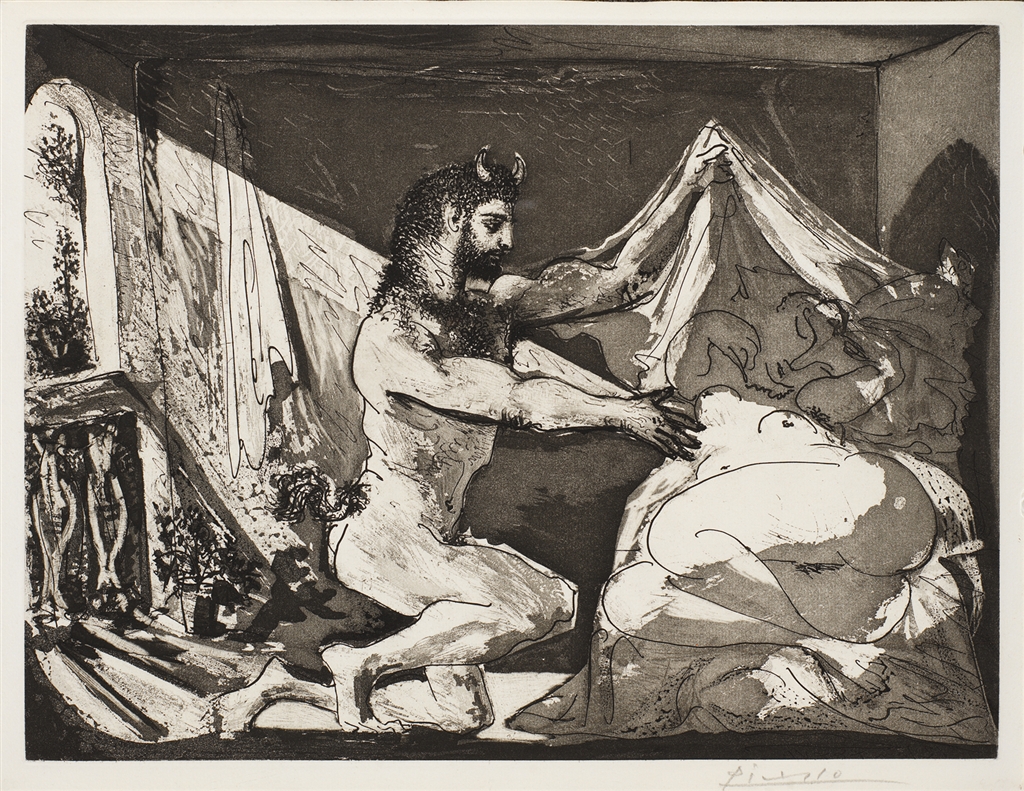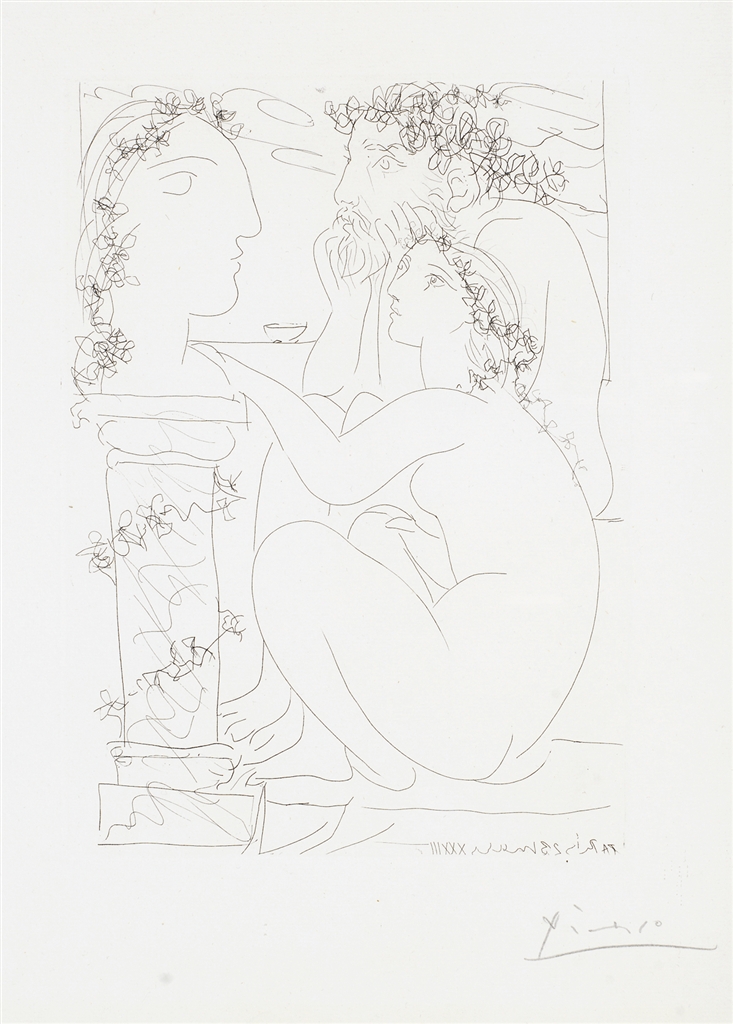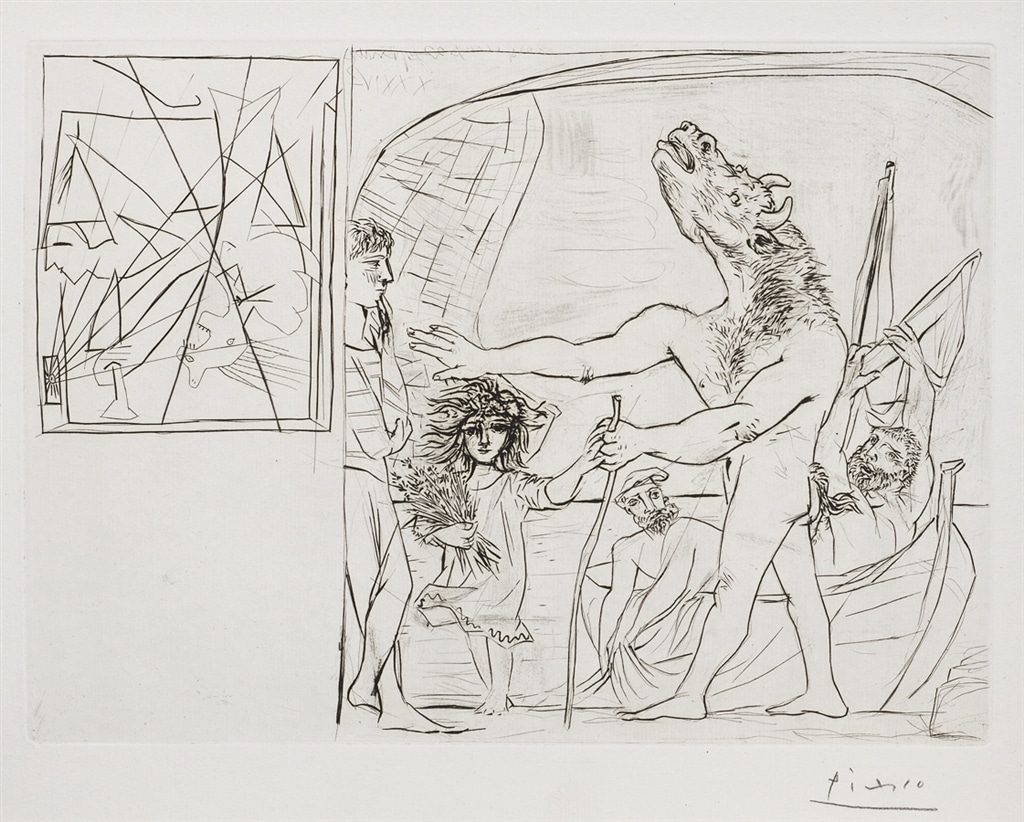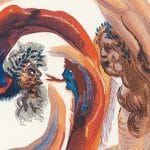Picasso’s Vollard Suite: A Portrait of the Artist in the 1930s
Pablo Picasso’s Vollard Suite ranks among the greatest graphic achievements of the 20th century. In fact, many consider it the masterpiece of Picasso’s work with etching.
The 100 etchings in the groundbreaking suite were created during the 1930s, a particularly turbulent period in the artist’s life.
Picasso received the commission for the etchings from famed French art dealer and publisher Ambroise Vollard, an early champion of Vincent Van Gogh, Paul Cézanne, Pierre-Auguste Renoir, and many other legendary artists.
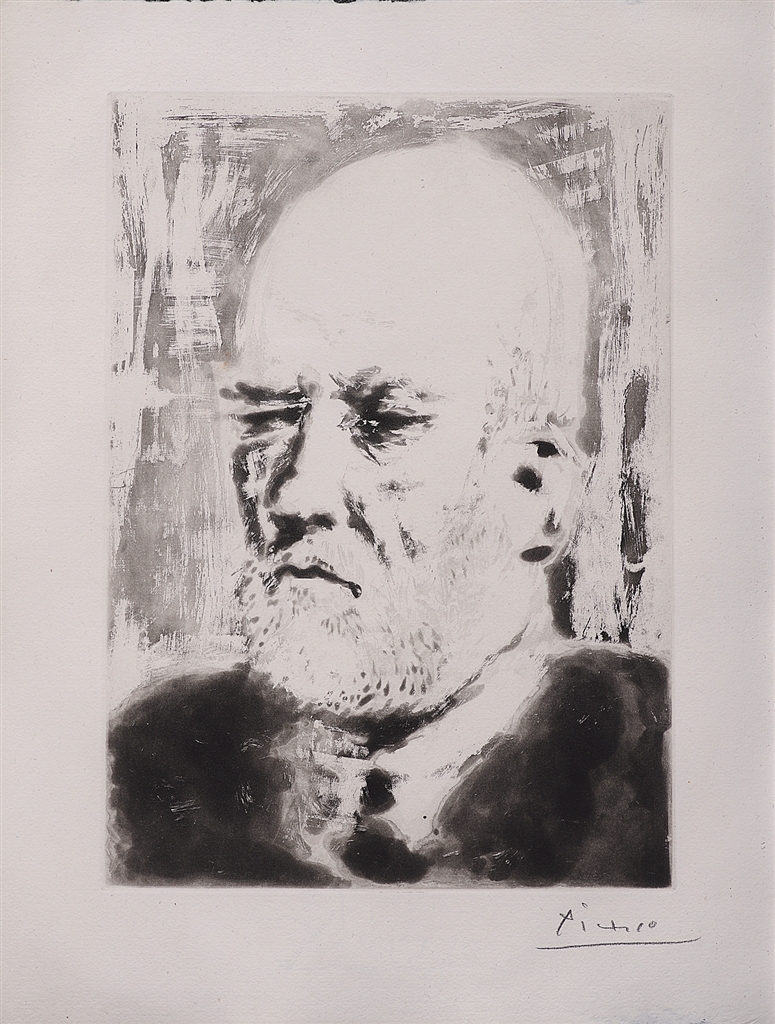
One of Picasso’s portraits of Ambroise Vollard—”Portrait de Vollard II” (1937). Etching from the artist’s Vollard Suite.
Vollard had given Picasso one of his first major breaks, hosting an exhibition of his work in 1901, when the artist was still trying to make a name for himself in the Parisian art world.
However, Vollard was not a fan of Picasso’s more experimental Cubist paintings and stopped representing him in 1910.
Their relationship changed in 1931. That year, two books were published featuring multiple etchings by Picasso—“Le Chef-d’œuvre inconnu” by Honoré de Balzac and “Les Métamorphoses” by Ovid—both were critical and popular successes.
This acclaim ignited Picasso’s interest in etching and caught the attention of Vollard, who saw an opportunity for his art publishing business. Vollard ordered 100 new etching plates from Picasso, paying the artist for his work with original paintings from Cézanne and Renoir.
MAKING THE VOLLARD SUITE
The majority of Picasso’s plates from the Vollard Suite are line etchings (occasionally with drypoint), a technique in which Picasso was expert. On several of the plates, Picasso used “sugar-lift” or “lift-ground” aquatint, an etching technique that allowed him to paint his design directly onto the plate.
It took the artist six years to deliver the final etched copper plates to Vollard. The resulting impressions open a window into Picasso’s dominant preoccupations between 1931 and 1937.
These included meditations on Rembrandt and the artist at work, wild depictions of the mythical Minotaur, and, perhaps most famously, Picasso’s relationship with his “muse” and mistress, Marie-Thérèse Walter.
There are five major thematic sections of the Vollard Suite. They’re known as The Battle of Love, Rembrandt, The Minotaur, Blind Minotaur, and The Sculptor’s Studio. The suite also includes three portraits of Vollard himself.
Walter makes her appearances throughout the 46 etchings of The Sculptor’s Studio. Picasso chose to represent a sculptor as the artistic ideal, rather than a painter like himself, because he was at the time steeped in classicism, and the Greeks believed sculpture was the highest art form.
In the Vollard Suite, Picasso depicts Walter as his sculptor’s muse. Picasso met Walter in 1927, approaching her in front of the Galeries Lafayette in Paris when she was only 17 years old.
Picasso was married at the time to Russian ballerina Olga Khokhlova, but the 45-year-old artist and the teenaged Walter soon began a passionate affair.
In the Sculptor’s Studio images, Walter is a recurring presence, often shown lounging in the artist’s studio, offering visual commentary on the relationship between the artist and his subject.
In 1935, Walter became pregnant with Picasso’s child, resulting in Khokhlova leaving her husband and taking his son Paulo away to the South of France. However, that same year, Picasso was won over by a new “muse”—French artist Dora Maar.
Things apparently became heated between Walter and Maar when they accidentally met at the studio where Picasso was working on “Guernica,” his 1937 masterpiece. Legend has it that the two women wrestled each other, much to Picasso’s delight.
Despite these distractions, Picasso worked feverishly on the neoclassical etchings—particularly throughout 1933—but did not deliver the final plates to Vollard until 1937. The suite includes three portraits of Vollard himself.
Tragically, Vollard died in a car accident two years later in 1939, before the plates could be printed.
As a result of Vollard’s death and the escalation of World War II, the first series of the “Suite Vollard” was not offered for sale until the 1950s.
The final collection stands as a testament to Picasso’s uncanny ability to master every art form. His etchings from the Vollard Suite are mature, complex, evocative, and absolutely stunning.
♦ ♦ ♦ ♦ ♦
To collect etchings from the Vollard Suite or other works of art from Picasso, register for our exciting online auctions or contact our gallery consultants at (800) 521-9654 ext. 4 during business hours or at sales@parkwestgallery.com.
♦ ♦ ♦ ♦ ♦
WANT TO SEE THE VOLLARD SUITE IN PERSON?
If you’re interested in Picasso, The Park West Museum, just outside of Detroit, has extensive galleries devoted to the works of Picasso, including one of the largest collections of Picasso ceramics on display anywhere in the world.
There are several works from the Vollard Suite prominently featured in the galleries.

The Vollard Suite gallery at Park West Museum.
Please check the Park West Museum homepage for information on visiting the Park West Museum. The gallery and museum are located at 29469 Northwestern Highway, Southfield, Michigan 48034.

